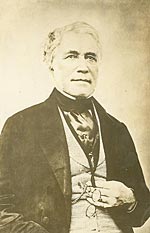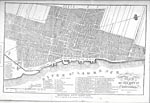

Second incorporation of Montréal
Montréal gradually recovered its autonomy in the 1840s. Then governor general Lord Sydenham granted the city a second charter and appointed Peter Mc Gill as the second mayor of the municipality. Council was now made up of 18 councillors.
It was during that period that Québec’s municipal system took shape. Through a series of acts and ordinances adopted between 1840 and 1870, all parishes and townships of the province were in turn set up as municipal corporations. The first impulse of that movement came from the famous Lord Durham Report.
In 1838, Durham was commissioned by the British Government to conduct and inquiry into the cause of the insurrection of 1837-1838. The report centred on the principle of responsible government for the colony and the assimilation of French Canadian, but there was special emphasis on the necessity of providing the colony with the proper municipal institutions and tools essential to everyday life. For liberal-minded Durham, the creation of such municipal institutions was the very foundation of democracy and community life.
Montréal then recovered its autonomy within a more comprehensive structure. The second charter defined its power quite specifically. The city, then numbering some 40 000 inhabitants, was first divided up into six electoral districts, then into nine constituencies as of 1846. Under that new regime, electors were called upon to choose three councillors per district. The mayor was still appointed by city council, but councillors were required to choose six in their group to head the various municipal departments that were being set up at the time.
















